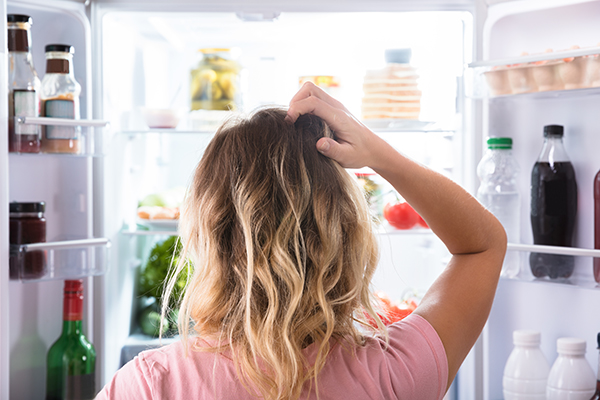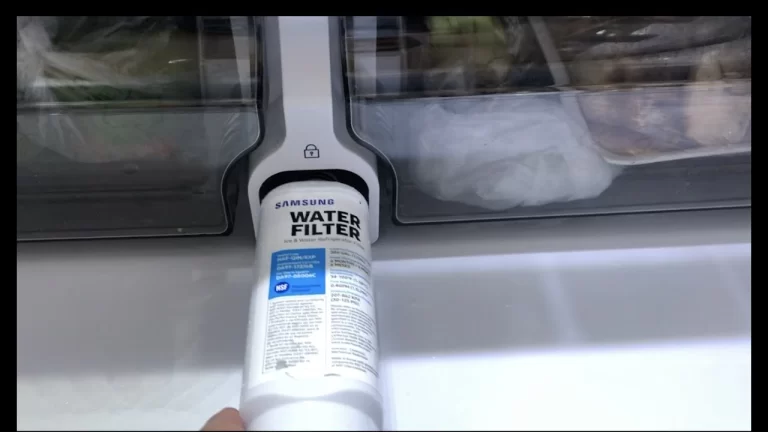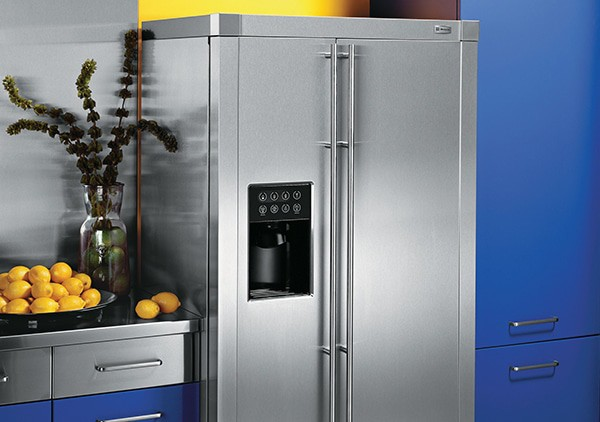Addressing issues with your Samsung refrigerator ice maker can be simpler than you think. A common solution is the reset function, which often solves minor problems effectively. This article will guide you through a step-by-step process of resetting your ice maker, ensuring optimal performance for your chilled beverages. Stay with us to troubleshoot and resolve any ice maker complications quickly and efficiently.
When your Samsung refrigerator’s ice maker is not functioning properly, resetting it can often resolve the issue. To reset, locate the reset button on the ice maker, usually found inside the freezer compartment. Press and hold this button for about 5-10 seconds and it should be normal again.
Troubleshooting Guide for Samsung Refrigerator Water Dispenser Not Working After Replacing Filter
| Issue | Symptoms | Fix |
| 1. Ice Maker is Turned Off | No ice production | Check the ice maker’s power switch or control panel and ensure it is turned on |
| 2. Freezer Temperature Too High | Ice not forming or forming slowly | Lower the freezer temperature to the recommended setting, usually around 0°F (-18°C) |
| 3. Blocked Water Line | No ice or small ice cubes | Check the water supply line for kinks or blockages and ensure it’s properly connected |
| 4. Faulty Water Inlet Valve | No ice production, no water in ice maker | Test the water inlet valve and replace it if necessary |
| 5. Clogged Water Filter | Slow ice production, small or hollow cubes | Change the refrigerator’s water filter |
| 6. Ice Maker is Jammed | No ice, clicking sound, or ice stuck in the maker | Remove the ice bin and clear any ice that may be jamming the ice maker |
| 7. Faulty Ice Maker Assembly | No ice production, strange noises | Replace the ice maker assembly or contact a technician |
| 8. Ice Bin is Full | Ice production has stopped but ice bin is full | Remove some ice from the bin to allow space for more ice to be made |
| 9. Faulty Ice Maker Thermostat | Ice maker not cycling properly | Replace the thermostat or contact a technician |
| 10. Ice Maker Mold Thermostat Malfunction | Ice cubes not ejecting from the mold | Check the mold thermostat, and if it’s not functioning, replace it |
| 11. Defective Ice Maker Motor | Ice maker not cycling, no ice production | Replace the ice maker motor or contact a technician |
| 12. Ice Maker Switch Failure | Ice maker not turning on or off properly | Inspect and replace the ice maker switch if necessary |
| 13. Ice Cube Size Control Issue | Ice cubes are too small or too large | Adjust the ice cube size control, or check for a malfunctioning component |
| 14. Faulty Ice Level Control Board | Ice maker not shutting off when the bin is full | Replace the ice level control board |
| 15. Frost or Ice Buildup Around Ice Maker | Ice production slow, ice cubes sticking together in clumps | Defrost the freezer and ensure that the door seals are airtight |
Understanding Samsung Refrigerator’s Ice Maker
Before diving into the issues and their solutions, it’s essential to understand the functionality of an ice maker in a Samsung refrigerator. It’s an automated system that creates ice cubes, storing them in an ice bucket for easy access. The ice makers in Samsung refrigerators vary, including basic models that produce regular ice cubes, to more advanced ones capable of making crushed ice, or even craft ice for cocktails.
Identifying Common Problems with Samsung Refrigerator Ice Makers

As convenient as they are, ice makers are not exempt from facing issues. Here, we outline 15 common problems that you might encounter with your Samsung refrigerator ice maker:
1. Not Making Ice
Issue: If there’s no ice production, possible causes include a blocked water line, a malfunctioning ice maker module, or insufficient freezing temperature.
Fix: Ensure that the ice maker is turned on. Check if the water supply line is kinked or blocked and confirm that the freezer is cold enough (below 10°F or -12°C).
If these checks are fine, the issue might be with the ice maker module, which would require contacting a technician for repair or replacement.
2. Making Too Little Ice
Issue: When the ice maker produces less ice, it can be due to a clogged water filter, low water pressure, or ice maker mechanical issues.
Fix: Regularly change the water filter (at least every six months) and ensure adequate water pressure to the ice maker.
If the ice production is still low, it might be worth having a professional inspect the ice maker for any mechanical issues.
Check Out: Samsung refrigerator defrost problem
3. Making Too Much Ice
Issue: This issue can arise from a faulty shutoff arm or sensor, which fails to signal the ice maker to stop producing ice when the bin is full.
Fix: Manually move the shutoff arm to the off position. If the ice maker continues production, a professional might need to replace the arm or sensor.
4. Ice Tastes Bad
Issue: Contaminants in the water supply, a dirty ice bin, or spoiling food in the refrigerator can cause the ice to taste bad.
Fix: Along with replacing the water filter, ensure that the ice storage bin is cleaned with mild soap and water at least once a month. Regularly check for and remove any expired or spoiling food in the refrigerator.
5. Ice Has an Odd Smell
Issue: Similar to bad taste, odorous ice can be attributed to impurities in the water or lingering smells from food.
Fix: In addition to replacing the water filter and cleaning the ice bin, use baking soda or a refrigerator deodorizer to neutralize odors. Ensure proper sealing of aromatic foods.
6. Small or Misshaped Ice Cubes
Issue: Low water pressure or a malfunction in the ice maker’s cycle timer can cause small or misshaped ice cubes.
Fix: Check the water supply to make sure it has adequate pressure. The ice maker’s cycle timer may also need to be recalibrated or replaced, which is best done by a technician.
7. Ice Cubes Sticking Together
Issue: Infrequent use of ice, a high freezer temperature, or an overfilled bin can cause ice cubes to stick together.
Fix: Regularly use ice to keep it from building up, adjust the freezer temperature to ensure it’s cold enough, and avoid overfilling the ice bin.
Read More: Samsung refrigerator ice maker problems
8. Loud Noises During Ice Production
Issue: Mechanical problems or ice getting stuck in the machinery can cause loud noises.
Fix: First, check for any visible ice jams and remove them. If the noise continues, this might be a mechanical issue, and professional service is recommended.
9. Water Leaks Around the Ice Maker
Issue: Leaks can be caused by a cracked water line or loose connections.
Fix: Inspect the water lines for any visible damage and ensure all connections are tight and secure. Replace any lines or connectors that are damaged.
10. Ice Dispenser Not Working

Issue: Ice could be jammed in the dispenser, or the dispenser motor might be malfunctioning.
Fix: Check the chute for any ice jams and clear them. If the motor is not functioning properly, it may need repair or replacement by a technician.
11. Frost or Ice Buildup Inside the Ice Maker
Issue: A damaged door seal might allow warm air inside, causing frost buildup.
Fix: Check and replace the door seals if necessary. Also, ensure that the freezer door is properly closed at all times.
12. Ice Maker Not Turning Off
Issue: This could be due to a defective control switch or sensor.
Fix: Try turning off the ice maker manually. If it doesn’t respond, this could indicate a faulty control switch, and a technician should be consulted.
Learn More: Samsung refrigerator water dispenser not working
13. Ice Tray Not Filling with Water
Issue: This could be due to a clogged water supply line or a malfunctioning water inlet valve.
Fix: Check the water supply line for any clogs and ensure it’s properly connected. If this doesn’t resolve the issue, the water inlet valve might be faulty and may need replacement.
14. Jam in the Ice Maker Mechanism
Issue: Occasionally, ice or debris can jam the ice maker mechanism.
Fix: Safely unplug the refrigerator and cautiously remove any ice or debris. If this doesn’t resolve the issue, it might be a mechanical problem requiring professional service.
15. Ice Maker Continuously Running a Cycle Without Producing Ice
Issue: This could be due to a failure in the ice maker’s thermostat or a faulty heating element which loosens the ice.
Fix: These are complex issues that usually need the expertise of a technician. It’s best to consult a professional for the repair or replacement of these components.
Recognizing When to Reset Your Samsung Refrigerator Ice Maker

If you’re experiencing any of the issues mentioned above, resetting your ice maker might be necessary. This helps the appliance recalibrate its functions. However, before proceeding with the reset, ensure you’ve gone through the user manual and are aware of the safety precautions.
A Step-by-Step Guide to Resetting a Samsung Refrigerator Ice Maker
Resetting the ice maker in your Samsung refrigerator can resolve various issues like not producing ice, producing too little ice, or jams. Here is a detailed step-by-step guide to resetting the ice maker in a Samsung refrigerator.
1. Safety First
Before you begin, it’s important to ensure your safety. Unplug your refrigerator from the electrical outlet or turn off the circuit breaker to prevent any electrical accidents.
2. Open the Freezer
Open the freezer section where the ice maker is located. Most Samsung refrigerators feature the ice maker inside the freezer compartment. However, some newer models, like the Samsung Family Hub, have ice dispensers in the door.
3. Locate the Reset Button
In traditional Samsung refrigerators, the reset button is usually located on the ice maker itself. It’s often a small, rounded button that may be labeled “reset.” For certain models, such as the RF4289HARS, the reset button can be found on the ice maker’s right side.
4. Press the Reset Button
Press and hold the reset button for about 5-10 seconds. Some Samsung ice makers will make a chime sound when it’s resetting, while others may have a light that blinks.
5. Observe the Ice Maker
After releasing the reset button, observe the ice maker. You should notice the ice maker cycle, which is typically characterized by a series of movements and sounds. This cycle usually takes around 30 seconds to 2 minutes.
Check Out: Samsung fridge water dispenser keeps running
6. Check the Ice Tray
Ensure that the ice tray is back to its original position, and that there are no obstructions. For models like the RF28R7201SR, the tray should automatically return to its normal position after the cycle is complete.
7. Plug the Refrigerator Back In
Plug your refrigerator back into the electrical outlet or turn the circuit breaker back on.
8. Wait for Ice Production
It may take around 6 to 12 hours for the ice maker to start producing ice again. According to Samsung, under normal operating conditions, the ice maker should produce approximately 120 ice cubes per day.
9. Verify Ice Production
After waiting, check the ice bin to see if it has started filling with ice.
10. Addressing Further Issues
If your ice maker doesn’t start producing ice after the reset, there may be a more serious issue, such as a malfunctioning water inlet valve, which will require professional service.
11. Consulting the User Manual
Different Samsung refrigerator models may have slightly different reset procedures. It’s advisable to consult the user manual for your specific model for the most accurate instructions.
Tips for Preventive Maintenance of Your Samsung Ice Maker
Keeping your Samsung ice maker in prime condition is key to ensuring a constant supply of ice when you need it. This guide will provide you with tips on how to perform preventive maintenance on your Samsung ice maker.
1. Regular Cleaning
Clean the ice maker and storage bin at least once a month. Turn off the ice maker, remove the ice, and wipe the interior with a soft cloth dampened with warm water and mild soap. Ensure that you rinse and dry it completely before turning it back on.
2. Keep the Freezer Organized
Make sure that the freezer compartment is not over-packed. This allows air to circulate freely, maintaining the appropriate temperature for ice production.
3. Change the Water Filter
Replace the water filter regularly, as per the manufacturer’s recommendations (usually every 6 months). This not only ensures good tasting ice but also prevents clogs in the water lines.
4. Monitor Freezer Temperature
Ensure that your freezer temperature is set correctly. Ideally, it should be set at 0°F (-18°C). Too high a temperature may hinder ice production, while too low might cause frost buildup.
Read More: Samsung twin cooling fridge freezer problems
5. Inspect the Water Supply Line
Regularly check the water supply line for kinks, leaks, or blockages. Ensure that the water pressure is sufficient for the ice maker to function optimally.
6. Check the Ice Shutoff Arm
Inspect the ice shutoff arm or sensor to ensure it is functioning properly. Make sure that it moves freely and isn’t obstructed by any ice cubes or debris.
7. Regularly Use the Ice
Frequent use of ice prevents the cubes from clumping together. If you don’t use ice often, consider emptying the bin once a week and allow the ice maker to produce fresh ice.
8. Clean the Condenser Coils
The condenser coils at the back or beneath the refrigerator are essential for cooling. Clean them every 6 months using a brush or vacuum to remove dirt and dust.
9. Ensure Door Seals are Airtight
Check the freezer door seals to make sure they are airtight. Any leaks can cause the freezer to work harder, which could affect ice production.
Check Out: Samsung refrigerator noise stops when door open
10. Defrost When Necessary
If your model is not a frost-free one, defrost the freezer regularly to prevent ice buildup, which can interfere with the ice maker’s operation.
11. Keep the Ice Maker Level
If your refrigerator isn’t level, it could affect the ice maker. Use a level to ensure your fridge is even, and adjust the feet as necessary.
12. Listen for Unusual Noises
Pay attention to any unusual sounds coming from the ice maker. If you hear odd noises, it could indicate a problem that requires attention.
13. Avoid Using Hard Water
If possible, avoid using hard water as it can cause mineral buildup in the ice maker and water lines. Consider installing a water softener if necessary.
14. Monitor Ice Quality
Keep an eye on the quality of ice. If you notice any change in taste or appearance, it might be an indication of a required filter change or cleaning.
15. Schedule Professional Maintenance
Consider scheduling annual maintenance with a professional technician. They can inspect for any issues that you might not easily detect and perform a thorough cleaning and optimization.
Frequently Asked Questions (FAQs)
We address some common questions regarding Samsung ice makers, such as the frequency of resets, what to do when resets fail, and understanding the impact of resets on the appliance.
Why would I need to reset my Samsung refrigerator ice maker?
Resetting your Samsung refrigerator ice maker is often necessary when it is not producing ice, when ice cubes are smaller or larger than usual, or when there seems to be a delay in ice production. Resetting can also help resolve issues after a power outage.
How do I know if the ice maker reset was successful?
After you press the reset button, the ice maker should go through a cycle that includes the tray filling up with water and the arm turning. Some Samsung models might make a chime sound or have a light that blinks to indicate that the reset was successful.
My Samsung refrigerator does not have a visible reset button on the ice maker. What should I do?
Some Samsung refrigerator models do not have a visible reset button. In such cases, you can try unplugging the refrigerator for a few minutes and then plugging it back in. If this doesn’t work, refer to the user manual for model-specific instructions.
What should I do if my Samsung ice maker still doesn’t produce ice after resetting?
If the ice maker doesn’t start producing ice after resetting, check for any issues such as a blocked water line, incorrect freezer temperature, or a full ice bin. If everything seems fine and it’s still not producing ice, it might be best to contact a service technician.
How often should I reset my Samsung refrigerator ice maker?
There is no specific frequency for resetting the ice maker. It should be done as needed, based on the performance and issues of the ice maker. Frequent resets might indicate an underlying problem, in which case consulting a technician might be necessary.
Conclusion
In conclusion, understanding the Samsung refrigerator ice maker reset process is crucial for continuous, hassle-free ice production. Being able to identify common issues and practicing preventive maintenance can ensure optimal appliance performance. If persistent problems occur, consulting a professional is recommended. Through regular care and timely intervention, you maintain a consistent ice supply and prolong your refrigerator’s lifespan, securing its essential role in your kitchen.






